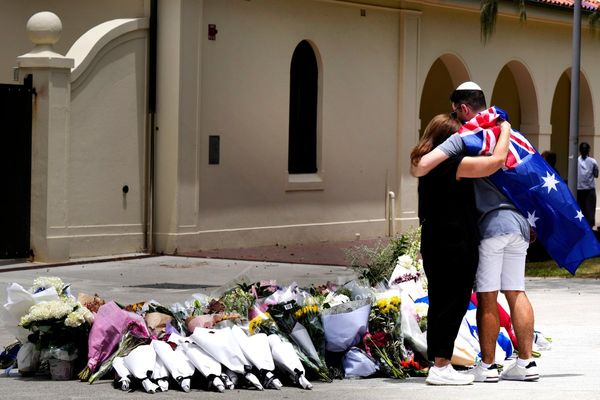Vladimir Putin vowed Russia’s annexation of four occupied regions in Ukraine is irreversible as he prepared to formalize Europe’s biggest land grab since World War II, defying efforts by Kyiv, backed by the U.S. and its allies, to recapture its lost territory.
“They will become our citizens forever,” the Russian president told officials in a Kremlin ceremony Friday before the signing of annexation documents. He demanded Ukraine stop fighting and begin talks, but refused to negotiate about the lands he’s absorbing.
The United Nations and many countries have denounced the annexation as illegal. Ukrainian President Volodymyr Zelenskyy said Thursday Russia would “annex itself to the catastrophe that it has brought to the occupied territory of our country.”
With his troops losing ground to a Ukrainian counteroffensive, Putin has been struggling to revive his seven-month-old invasion. He’s ordered the mobilization of 300,000 reservists to shore up his battered army, triggering an exodus of Russians trying to avoid being sent to the front.
An opinion poll published Thursday showed that an increasing number of Russians are concerned the war is going badly and most are alarmed at the decision to call up reservists.
Even so, Putin has brandished the threat of using nuclear weapons to protect Russia’s sovereignty over the newly acquired territories, drawing warnings of harsh retaliation from the U.S. and its allies.
In his speech Friday, Putin said, “We will use all means available to us to defend our lands,” but didn’t mention nuclear weapons specifically.
Kremlin spokesman Dmitry Peskov called the talk of nuclear escalation “irresponsible” and declined to say whether attacks on the annexed territories may meet the standard for using the weapons set out in Russia’s military doctrine.
In an apparent sign of the hastiness of the latest moves, Peskov said he wasn’t immediately able to say whether Russia will be annexing all of the territory of the Kherson and Zaporizhzhia regions or just the areas held by its troops. He said the agreements Friday will cover the full areas of the Donetsk and Luhansk regions, though Ukraine still controls parts of those.
If the whole territories of the four regions are included, Putin is laying claim to about 15% of Ukraine’s land area, making the move the largest forced annexation in Europe since World War II.
“This is comparable to Austria and Belgium combined. Or Denmark, Belgium and the Netherlands combined. Or 30% of Germany,” Estonian Prime Minister Kaja Kallas said in a statement. “Russia tries to rewrite the map of Europe.”
Russian officials are moving quickly to try to formalize their grip on the occupied areas, promising to issue passports and to appoint senators representing the regions in the upper house of parliament.
Moscow has also stepped up threats to European energy supplies in an effort to sap support there for Ukraine. State gas giant Gazprom warned it may shut off the last pipeline carrying its gas to clients in western Europe, while leaks discovered in the Nord Stream links under the Baltic Sea have raised suspicions of sabotage and fears of attacks on other infrastructure.
By annexing the territories, Putin is effectively closing off avenues for a negotiated settlement. Ukraine has said it will only consider talks once Russian troops are driven back at least to their positions on the eve of the Feb. 24 invasion.
A Russian missile strike killed at least 25 civilians near Zaporizhzhia early Friday, Ukrainian officials said. The city is one that Russia has included in the territory it claims to annex, although its forces have never reached it. The victims had been lining up in a convoy to travel toward the Russian-occupied zone to evacuate relatives, Ukraine said.
Kyiv’s allies in the US and Europe have vowed to continue billions of dollars in financial and military aid to support Ukraine’s drive to oust Russian forces. Ukrainian troops closed in on Lyman on Friday, a key regional town in the Donetsk region, with some analysts suggesting a large number of Moscow’s forces may be surrounded in the area.
Donbas, the eastern industrial heartland of Ukraine encompassing the Luhansk and Donetsk regions, has been the major focus of Russia’s campaign, with the involvement of separatist pro-Moscow forces that since 2014 have been battling Kyiv’s military.
With European countries facing the worst energy crisis since the OPEC oil embargo in the 1970s, the election of the first far-right government in Italy since World War II is raising hopes in Moscow that it can force a peace settlement on its terms. But with morale low in the Russian armed forces, Ukraine is pushing ahead with its bid to recover Kremlin-held areas.







